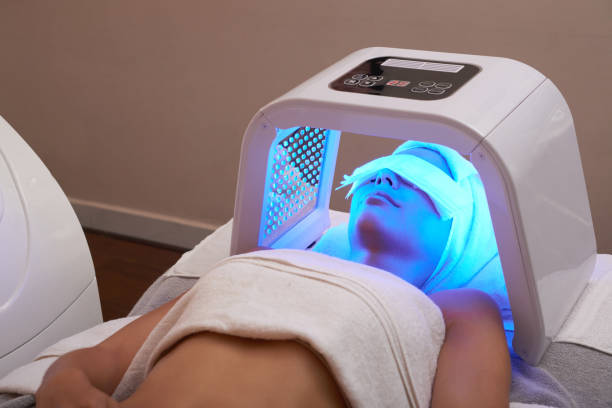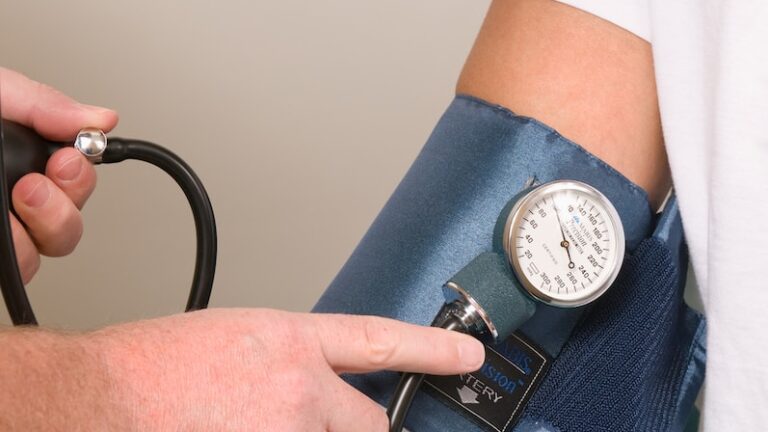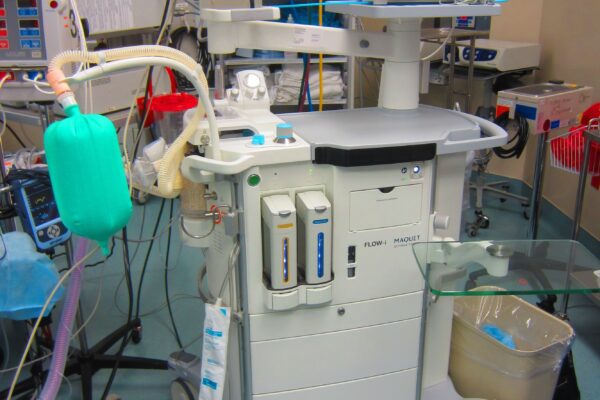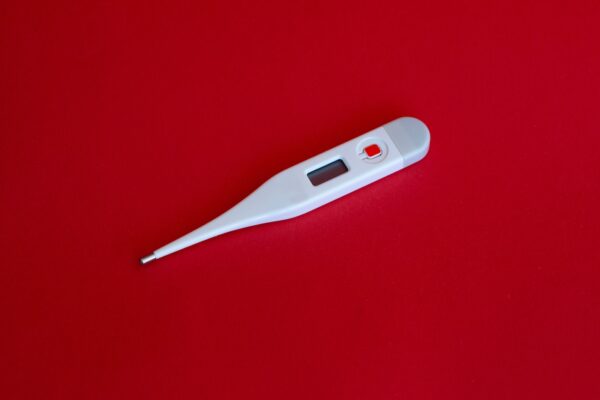The Sphygmomanometer: The Revolutionary Device Transforming Blood Pressure Monitoring
In today’s fast-paced world, staying on top of our health has become an absolute necessity. We all strive to lead a healthy lifestyle, but sometimes it can be challenging to keep our blood pressure in check. However, there is a solution that empowers individuals to make positive changes in their daily habits – blood pressure monitoring. By having a clear understanding of our blood pressure levels, we can make informed choices about our diet, exercise routine, and stress management. This contributes to better overall health and well-being.
But how do we monitor our blood pressure in a reliable and convenient way? That’s where the latest technology in blood pressure monitors comes to the rescue! These innovative devices offer accurate and reliable readings, giving us the power to monitor our blood pressure with ease.
With a blood pressure monitor, you have the freedom to check your levels whenever it’s convenient for you. Don’t let your busy schedule be an obstacle to maintaining a healthy blood pressure. With a reliable and accurate blood pressure monitor, you can take control of your health and make positive changes in your lifestyle. Invest in your wellbeing today and experience the benefits of revolutionized blood pressure measurement.
Unveiling the Sphygmomanometer
The sphygmomanometer, a device utilized to measure blood pressure, holds a fascinating history and a significant impact on healthcare. Originating in the 19th century, this ingenious tool has greatly contributed to our understanding and management of cardiovascular health. One of its remarkable features is its ability to provide precise measurements of blood pressure. With these accurate readings, medical professionals can effectively assess an individual’s cardiovascular wellbeing. This characteristic enables a comprehensive evaluation of one’s health, offering valuable insight into potential risks or areas of concern. The advantages of utilizing a sphygmomanometer lie in its reliability and consistency.
In contrast to earlier methods of blood pressure measurement, this device ensures that the readings obtained are not only accurate but also consistent across multiple assessments.
Such an advantage permits a more precise diagnosis and monitoring of blood pressure-related conditions. The benefits derived from employing a sphygmomanometer are truly remarkable. By delivering reliable and consistent readings, this device plays a pivotal role in enhancing healthcare outcomes. Through early detection of abnormal blood pressure levels, medical professionals can promptly intervene and develop appropriate treatment plans. This not only halts the progression of cardiovascular diseases but also enhances the overall wellbeing of individuals.
Understanding the Anatomy of a Sphygmomanometer
The sphygmomanometer is an impressive device that consists of several key components. Firstly, there is the inflatable arm cuff, which can be securely placed around the upper arm. This cuff is then filled with air through the use of a bulb pump, allowing it to tighten around the arm. To release the air and deflate the cuff, there is a valve that can be easily manipulated.
What sets this remarkable tool apart is its ability to accurately measure the changing pressure within our bodies. By incorporating a column of mercury and a pressure meter, the sphygmomanometer provides precise readings that allow us to monitor our blood pressure with confidence.
The experience of using a sphygmomanometer becomes even more captivating when we introduce the stethoscope. This essential accessory enables us to listen to the rhythmic and soothing sounds of our blood flowing through the brachial artery. It provides a unique insight into our cardiovascular system and adds an extra level of fascination to the process.
One of the most critical components of a sphygmomanometer is the pressure meter. This technologically advanced device ensures that the readings obtained are both reliable and consistent. Designed with precision, it allows users to have peace of mind, knowing that they are receiving accurate blood pressure measurements. This level of accuracy is vital for monitoring one’s health and making informed decisions about their well-being.
Thanks to its advanced technology, the sphygmomanometer ensures reliable and consistent measurements, providing users with peace of mind and invaluable information about their health.
Types of Sphygmomanometers
There are two commonly used types of meters to measure blood pressure: manual and digital. Each type has its own advantages and drawbacks in terms of accuracy and convenience.
Manual meters require the use of a stethoscope for auscultation. Trained experts usually employ these instruments to assess blood pressure, relying solely on touch to obtain a preliminary measurement. However, this method only provides the systolic pressure.
The most trusted type of manual blood pressure measurement device is the mercury sphygmomanometer, which utilizes a mercury column to indicate pressure and eliminates the need for frequent recalibration. These meters are highly accurate and are often used in clinical trials and evaluations of high-risk patients.
Aneroid sphygmomanometers, which are mechanical meters with a dial, are commonly used but may require calibration checks. They are considered safer than mercury meters, but the less expensive ones are not as accurate. On the other hand, digital meters use oscillometric measurements and electronic calculations instead of auscultation. They can have either manual or automatic inflation, but both types are electronic and easy to use without training.
Digital meters are suitable for noisy environments and can measure both systolic and diastolic pressures through oscillometric detection. They use deformable membranes or differential piezo resistance, along with a microprocessor, to measure mean blood pressure and pulse rate. However, digital meters are not as accurate as manual meters when it comes to obtaining systolic and diastolic pressures, and calibration is a concern.
How to Use a Sphygmomanometer?
Here is a step-by-step guide to accurately measuring your blood pressure using either a manual sphygmomanometer or a digital blood pressure monitor.
HOW TO USE DIGITAL BLOOD PRESSURE MONITOR
First things first, find a comfortable spot to sit and relax for a few minutes. It’s important to calm your body before checking your blood pressure, especially if you’ve been active. Next, support your arm on a flat surface. Use your index and middle fingers to locate the brachial artery in the inner center of your elbow. This will help you find your brachial pulse. Once you feel the pulsation, you’re ready to move on. Now it’s time to position the cuff. Wrap it around your forearm, about an inch above your elbow, making sure not to cover the area where you felt the pulse. If you’re using a manual sphygmomanometer, this is where you’ll place the stethoscope. Secure the cuff in place, making sure it’s not too tight or too loose.
MANUAL SPHYGMOMANOMETER
1. Put the earpiece of the stethoscope in your ear and place the diaphragm at the location of your brachial pulse.
2. Hold the pressure gauge in your left hand and the bulb in your right hand.
3. Close the valve by turning the screw clockwise.
4. Squeeze and release the bulb to inflate the cuff until you can no longer hear the pulsation of your brachial pulse.
5. Keep your eyes on the gauge and slowly release the cuff pressure by turning the valve screw anticlockwise.
6. Listen carefully for the first pulsation in your ear. Once you hear it, it’s a sign that your blood pressure measurement is beginning. And that’s it! You’ve successfully learned how to use a sphygmomanometer to measure your blood pressure accurately. Use this guide whenever you need to monitor your cardiovascular health with confidence.
What Classifies as a High Blood Pressure Reading?
A high blood pressure reading can be a cause for concern, as it suggests that blood is flowing through your body with a strong and vigorous force. This increased pressure can potentially put you at a higher risk for heart attack or stroke. However, it’s important to note that the ideal blood pressure level varies depending on factors such as age, gender, and pregnancy.
When we talk about blood pressure, we’re referring to the strength of your blood as it pushes against the walls of your arteries. This force is generated by your heart, which pumps blood throughout your body. If your blood flows with too much force or pressure through your arteries, it is classified as high blood pressure or hypertension.
A blood pressure reading consists of two numbers, which provide information about whether your blood pressure falls within a healthy range. The first number, known as the systolic pressure, indicates the pressure in your arteries when your heart contracts. The second number, called the diastolic pressure, represents the pressure in your arteries when your heart relaxes between beats.
NORMAL BLOOD PRESSURE
For most adults, a normal blood pressure reading is considered to be 120/80 millimeters of mercury (mm Hg) or lower. This is commonly abbreviated as 120/80 mm Hg and spoken as “120 over 80.” It’s essential to prioritize maintaining a healthy blood pressure level to reduce the risk of heart disease and stroke. Regular check-ups with your healthcare provider can help you monitor your blood pressure and make any necessary lifestyle changes or medical interventions to keep it within a safe range.
Are there any signs or symptoms of high blood pressure?
High blood pressure often does not come with any noticeable symptoms, earning it the nickname of the “silent killer.” This means that many people may not be aware that they have high blood pressure. However, it is important to detect high blood pressure early because it significantly increases the risk of heart disease, stroke, kidney damage, and other complications. In some cases, when blood pressure is dangerously high, there may be symptoms to watch out for. These can include headaches, shortness of breath, nosebleeds, chest pain, visual problems, and dizziness.
However, it is crucial to have knowledge about high blood pressure and its associated health risks before it reaches this stage. The only sure way to determine if you have high blood pressure is by having your blood pressure measured. Once you know your blood pressure levels, working in collaboration with your doctor will allow you to find the most effective treatment options to maintain a healthy blood pressure level.
How frequently should you have your blood pressure examined?
If your blood pressure is higher than what is considered normal, it is important to follow your doctor’s recommendations on how often to monitor it at home. Additionally, it is crucial to consult your doctor on the necessary actions to take if your blood pressure readings are higher than usual. Even if you do not currently have high blood pressure, it is still essential to have it checked regularly as blood pressure can fluctuate over time.
Based on the advice of medical professionals, those with a low risk should follow these helpful recommendations:
– If you fall within the age range of 18 to 40, it is advisable to have your blood pressure monitored every couple of years. – For individuals over the age of 40, it is recommended to have your blood pressure checked on an annual basis.
However, certain factors may require more frequent monitoring of blood pressure. These factors include having a family history of hypertension, heart disease, diabetes, or kidney disease, being overweight or obese, experiencing sleep apnea or insomnia, and being a smoker.
Prevention and self-care
Engaging in regular physical activity offers the positive outcome of helping us keep a healthy weight, and it also has the advantage of decreasing the chances of experiencing high blood pressure and its associated health problems. By adhering to a well-balanced diet that is low in sodium, we can provide our bodies with essential nutrients without raising our blood pressure levels, thus benefiting our overall well-being and preventing the onset and management of high blood pressure.
Incorporating stress management techniques into our lives is beneficial as they minimize the negative impact of stress on our bodies, leading to lower blood pressure levels and an improved emotional state. We can reduce the risk of developing high blood pressure and its complications by limiting our alcohol intake and preventing the elevation of blood pressure levels.
By scheduling regular check-ups and monitoring, we gain the advantage of early detection and proper management of high blood pressure, resulting in reduced chances of complications and maintaining good cardiovascular health. Quitting smoking offers various advantages, including improvements in lung and heart health, which in turn lowers the risk of high blood pressure and various cardiovascular diseases. Adequate sleep is advantageous as it promotes healthy blood pressure levels, leading to a decreased likelihood of developing high blood pressure and an overall enhancement of our well-being.
When to see a doctor for high blood pressure
If you’re currently dealing with high blood pressure, it’s important to reach out to your doctor without hesitation if you happen to experience any of the following symptoms. These include feeling tired, experiencing queasiness, having difficulty breathing, feeling dizzy, dealing with frequent headaches, excessive sweating, encountering vision issues, feeling disoriented, experiencing chest discomfort, or noticing blood in your urine. By promptly seeking medical attention, you’ll ensure that you receive the help and care you need to address these concerns and manage your condition effectively.
Conclusion
High blood pressure is a serious concern that can have lasting negative effects on the heart and blood vessels over time. It is important to explore a range of effective home remedies that can help maintain normal blood pressure levels. These remedies include reducing sodium intake, staying active, managing stress, and moderating alcohol consumption.
If you have received a diagnosis of high blood pressure, it is of utmost importance to collaborate with a healthcare expert in order to create a customized treatment strategy that caters to your unique requirements.





